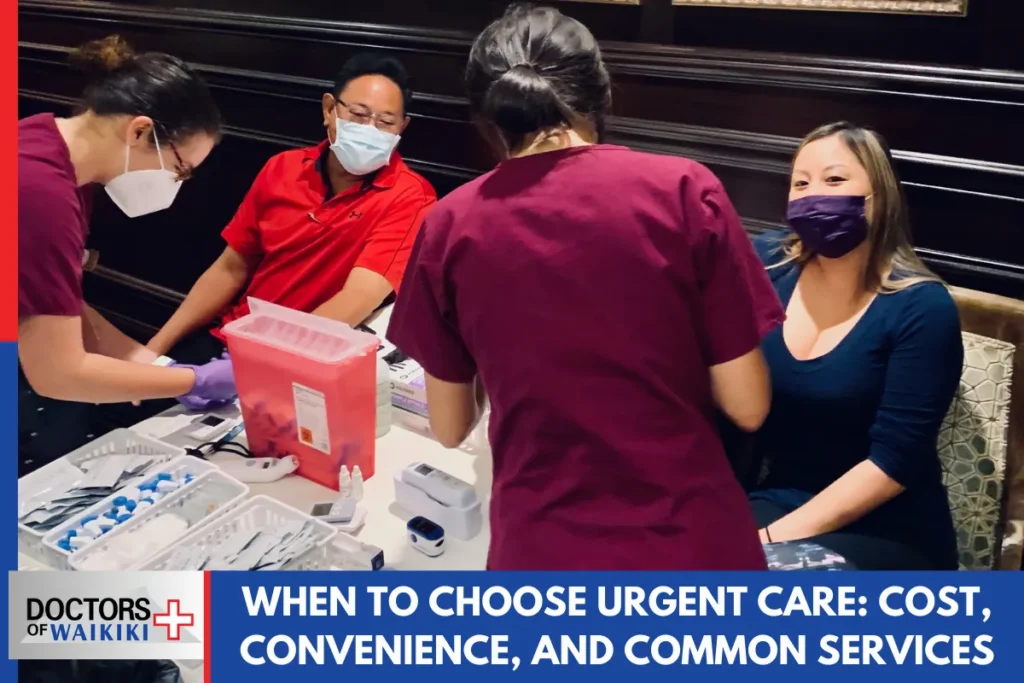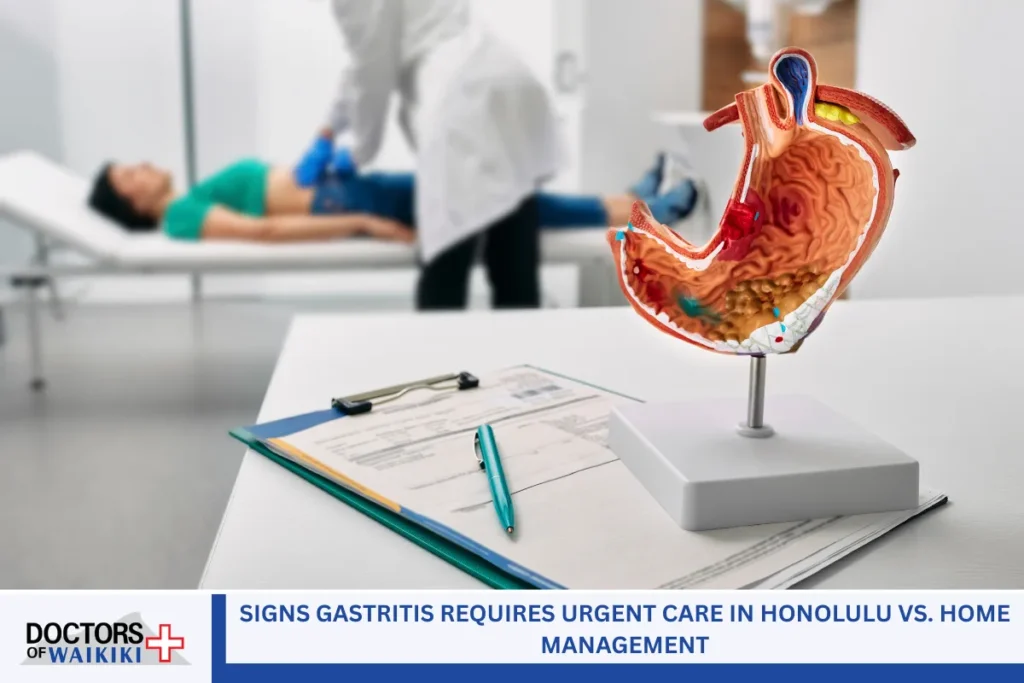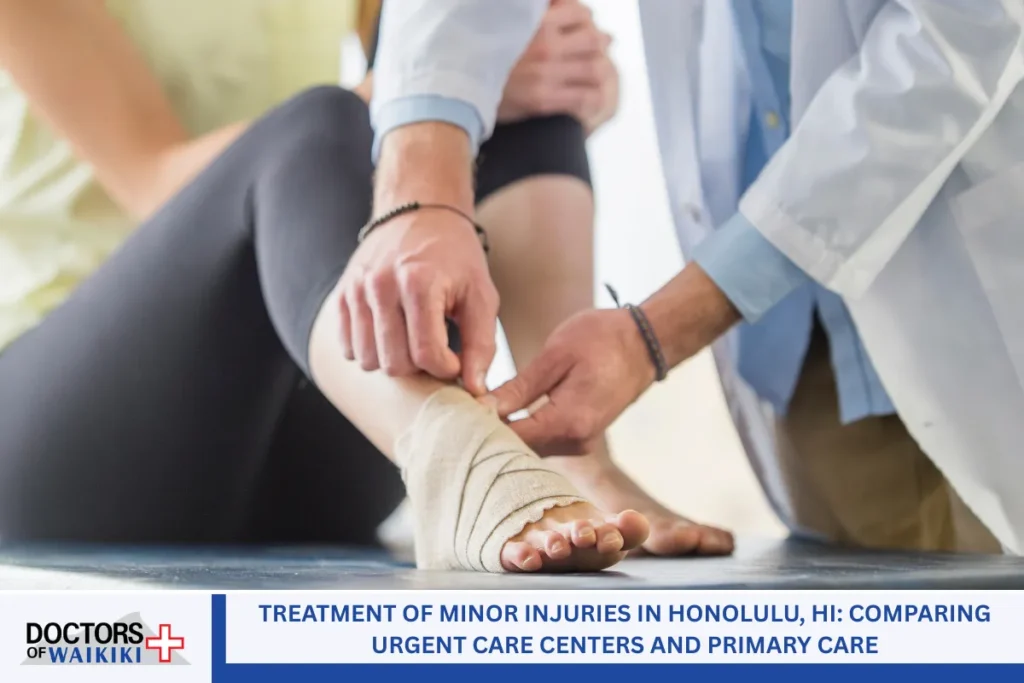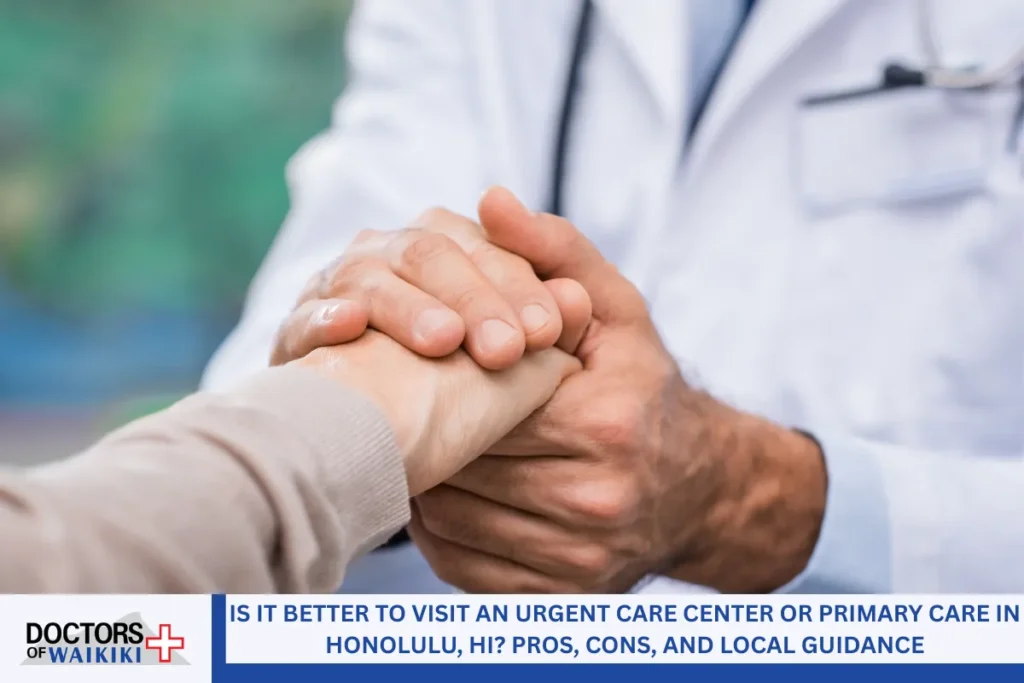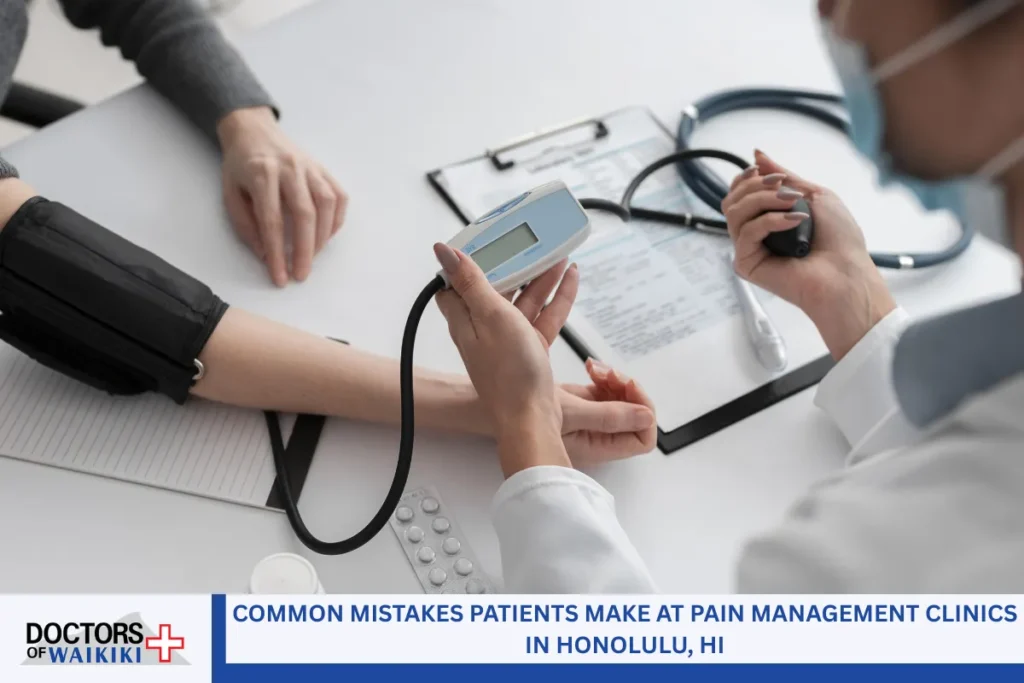Sometimes, you wake up with a sore throat, or your kid twists an ankle during soccer practice. It’s not serious enough for the emergency room, but you also can’t wait a week to see your doctor. That’s where urgent care comes in. It’s fast, convenient, and often more affordable than other options. In this article, we’ll explain everything you need to know about urgent care—when to go, how much it costs, and what kinds of services are available.
What Is Urgent Care?
How Urgent Care Centers Work

Urgent care clinics are walk-in medical centers where you can get help for minor injuries and illnesses. You don’t need an appointment, and most are open in the evenings and on weekends. These clinics are usually run by licensed healthcare professionals like doctors, physician assistants, and nurse practitioners.
They’re designed for non-life-threatening issues—things that need attention soon but don’t require emergency care. If your condition isn’t severe, urgent care might be just what you need.
Urgent Care vs. Emergency Room

It’s important to know the difference between urgent care and the emergency room (ER). The ER is meant for serious or life-threatening problems—like chest pain, heavy bleeding, or trouble breathing. Urgent care is for everything else that can’t wait, like:
- Minor cuts and burns
- Sprains and strains
- Cold and flu symptoms
- Ear infections
- Mild allergic reactions
If you’re unsure, many urgent care centers can help you decide if you need the ER instead.
Urgent Care vs. Primary Care vs. Convenient Care

Primary care doctors are great for routine checkups, managing chronic conditions, or long-term care. But they often have limited hours and longer wait times for appointments.
Convenient care (like clinics in pharmacies) handles simple issues such as flu shots or strep tests, but their services are more limited.
Urgent care fits right in the middle—it offers faster service than primary care and more options than convenient clinics.
How Much Does Urgent Care Cost?

Typical Costs Without Insurance
If you don’t have health insurance, urgent care is still one of the most affordable options for quick medical attention. Most visits cost between $100 to $200, depending on what kind of treatment or tests you need. This is far less than an ER visit, which can easily cost over $1,000 for minor issues.
With Insurance: What to Expect
If you do have insurance, your copay for urgent care is usually between $30 and $75. That’s a lot cheaper than an ER copay, which can be $150 or more.
However, keep in mind:
- You may need to pay extra for lab tests, X-rays, or medications.
- If the urgent care clinic is not in your insurance network, your costs could be higher.
Always check your insurance plan or call ahead to make sure the clinic accepts your coverage.
Hidden Fees to Watch For
While urgent care is budget-friendly, there are sometimes additional charges you might not expect, such as:
- Blood work or lab testing
- Imaging (like X-rays)
- Prescription medications
- Supplies like braces or slings
It’s a good idea to ask for a price breakdown before getting extra services.
Comparing to Emergency Room and Primary Care Costs
Let’s break it down simply:
- Emergency Room: $1,000 or more
- Primary Care: $100–$150 (may take days to get in)
- Urgent Care: $100–$200 (fast and same-day service)
Urgent care gives you the best mix of affordability and speed, especially for minor problems that just can’t wait.
Common Services Offered by Urgent Care Centers

Urgent care clinics can handle a wide variety of medical needs. Here’s a breakdown of what they usually treat:
Non-Emergency Illnesses
- Fever, cough, and flu
- Sore throat or strep throat
- Ear infections
- Stomach bugs or mild food poisoning
- Pink eye or other eye irritation
These are things that can make you feel awful but aren’t dangerous if treated quickly.
Minor Injuries

- Sprained ankles
- Minor fractures
- Burns or cuts needing stitches
- Insect bites or rashes
- Sports injuries
These are issues that may need immediate care but don’t pose a serious risk to your health.
Diagnostic Services

Many urgent care centers have X-ray machines and on-site labs, so they can:
- Check for broken bones
- Test for infections (like strep or flu)
- Run blood work or urinalysis
- Provide COVID-19 testing
This saves you time from visiting a separate lab or imaging center.
Preventive and Routine Services

Some clinics also offer wellness and work-related services, such as:
- School or sports physicals
- Flu shots and other vaccines
- Drug testing for jobs
- TB testing
- Travel medicine consultations
While urgent care isn’t a replacement for a regular doctor, it can be a one-stop shop for everyday health needs.
When Should You Choose Urgent Care?

Signs It’s a Good Fit
If your issue isn’t life-threatening but you still need help fast, urgent care is usually the right call. Consider urgent care when:
- You have a painful earache on a Saturday
- You’re running a high fever that doesn’t go away
- You suspect a sprain or minor break
- You have a painful UTI and can’t wait to see your doctor
- You need care after normal doctor hours
These are perfect examples of when urgent care can save the day.
When to Go Elsewhere
You should NOT go to urgent care if you experience any of the following:
- Chest pain or trouble breathing
- Signs of a stroke (numbness, slurred speech)
- Heavy bleeding
- Seizures
- Serious head injuries
These need emergency room care right away.
Also, if you’re dealing with long-term issues (like diabetes or high blood pressure), it’s better to see your primary care doctor, who knows your full medical history.
After-Hours and Weekend Access
One of the biggest benefits of urgent care is convenience. Most clinics are open:
- Weeknights (sometimes until 9 or 10 p.m.)
- Weekends
- Holidays
That means you can get the care you need even when your regular doctor is closed.
Pros and Cons of Choosing Urgent Care

Pros
There’s a reason more people are choosing urgent care—it’s simply more convenient in many situations. Here are some major advantages:
- Lower costs than emergency rooms
- Shorter wait times compared to ERs
- No appointment needed—just walk in
- Open late and on weekends
- Wide range of services for minor injuries and illnesses
Whether you have a sore throat or a sprained ankle, urgent care gives you fast, accessible help without draining your wallet.
Cons
Urgent care does have its limits. Here are a few downsides to keep in mind:
- Not ideal for serious emergencies like heart attacks or strokes
- Limited access to your full medical records
- Some centers may not accept your insurance plan
- You might not see the same doctor every time
That’s why it’s good for short-term help—but not a long-term substitute for your primary care provider.
How to Find the Right Urgent Care Center
Factors to Consider
Not all urgent care centers are the same, so choosing the right one can make a big difference. Here’s what to look for:
- Location: Choose one close to your home or work
- Accepted Insurance: Always ask if they take your health plan
- Services Offered: Some clinics offer X-rays, while others don’t
- Hours of Operation: Make sure they’re open when you need care
- Online Reviews: Check ratings on Google or Yelp for patient experiences
Questions to Ask Before You Go
To avoid surprise bills or limited care, ask these simple questions when calling or checking their website:
- Do you accept my insurance?
- What’s the estimated cost for a visit?
- Do you offer walk-in X-rays or lab tests?
- Will you share my records with my primary doctor?
A quick call ahead can save you a lot of time and confusion.
Your Best Option When You Need Care Fast
Knowing when to choose urgent care can save you time, money, and stress. If your condition isn’t life-threatening but still needs quick treatment, urgent care is often the smartest move. You’ll get professional care without the long wait times or high costs of an ER.
So next time you’re feeling under the weather, get hurt on the weekend, or can’t reach your primary doctor—remember, urgent care is there to help, right when you need it.
Honolulu Urgent Care – Doctors of Waikiki

Need fast, reliable urgent care in Honolulu? At Doctors of Waikiki, we’re here when you need us most—day, night, weekends, and holidays. Whether it’s a sudden fever, a minor injury, or something that just can’t wait for a doctor’s appointment, our walk-in clinic provides quick, compassionate care without the long ER wait or high costs. Located in the heart of Waikiki, we treat locals and visitors with friendly, professional service and short wait times. Our on-site lab, X-ray services, and experienced providers mean you can get everything you need in one stop. We accept most major insurance plans and offer clear, affordable pricing if you’re uninsured. Don’t let your day be ruined by an unexpected illness or injury—call (808) 922-2112 or stop by Doctors of Waikiki today. Your health shouldn’t wait, and with us—it doesn’t have to.
Frequently Asked Questions (FAQ)
Is urgent care cheaper than the ER?
Yes. On average, urgent care visits cost between $100–$200, while emergency room visits often cost $1,000 or more for the same non-emergency issue.
Does urgent care require insurance?
No. You can go to urgent care without insurance, but you’ll need to pay out of pocket. Many clinics post their prices online or can give you an estimate upfront.
Can urgent care prescribe medication?
Yes. Urgent care providers can prescribe medications for infections, pain relief, and other temporary conditions. They’ll often send your prescription to a nearby pharmacy.
How long is the wait at urgent care?
Wait times vary, but most urgent care clinics aim to see patients in 30 minutes or less. This is usually much faster than the ER.
Are urgent care visits covered by Medicare?
In most cases, yes. Medicare Part B generally covers urgent care visits if medically necessary, but you may still pay a copay or deductible.
Can I go to urgent care for stitches or X-rays?
Absolutely. Most centers offer basic wound care, stitches, and imaging services like X-rays. But for complex fractures or deep wounds, the ER may still be best.
Read Is Urgent Care Cheaper Than the ER? What Patients Need to Know

